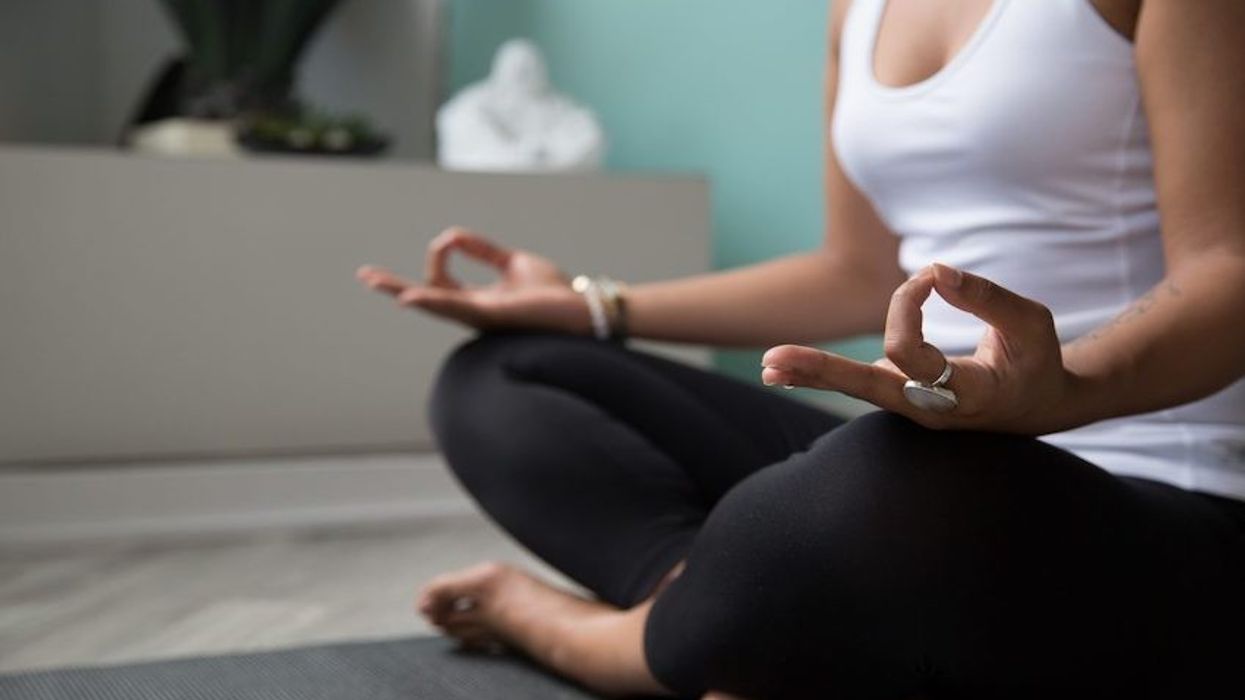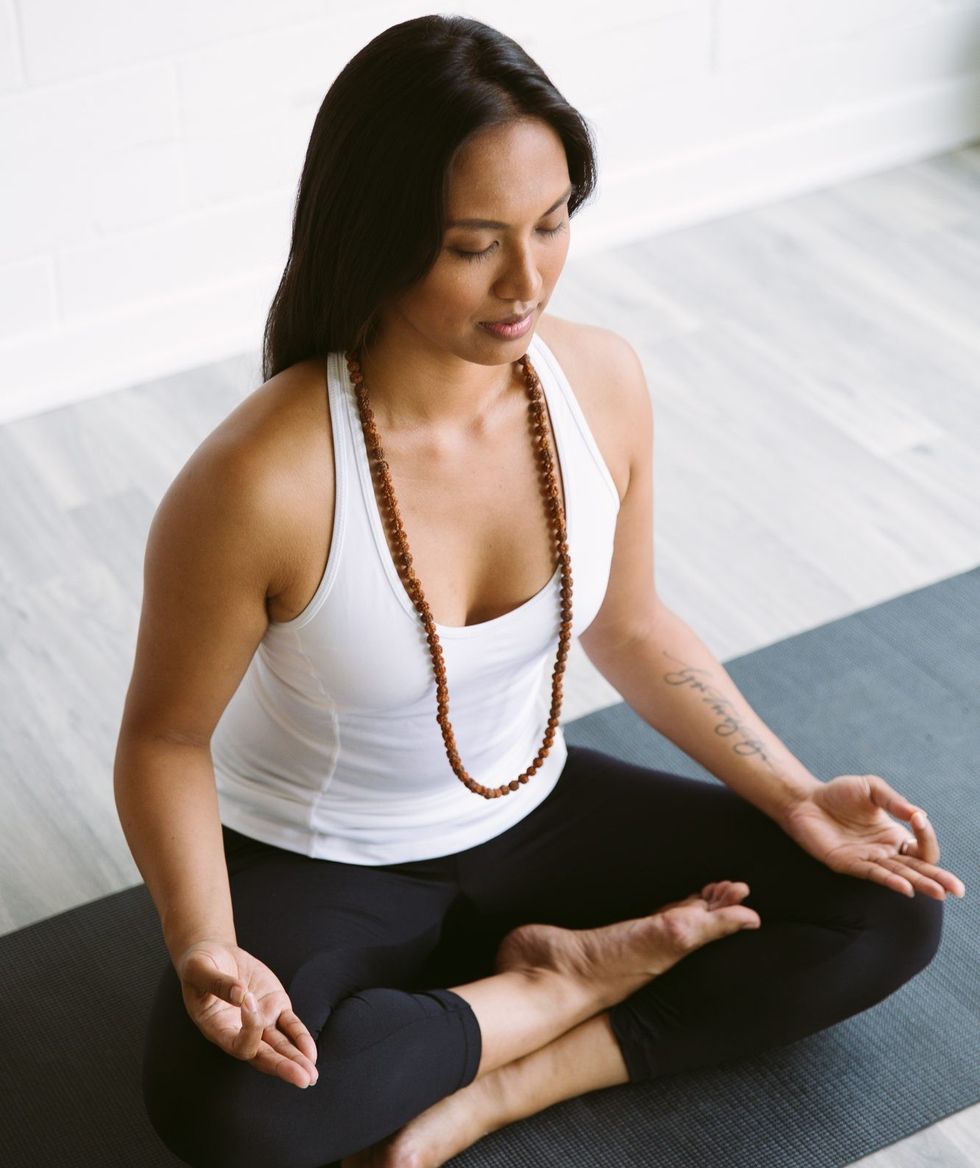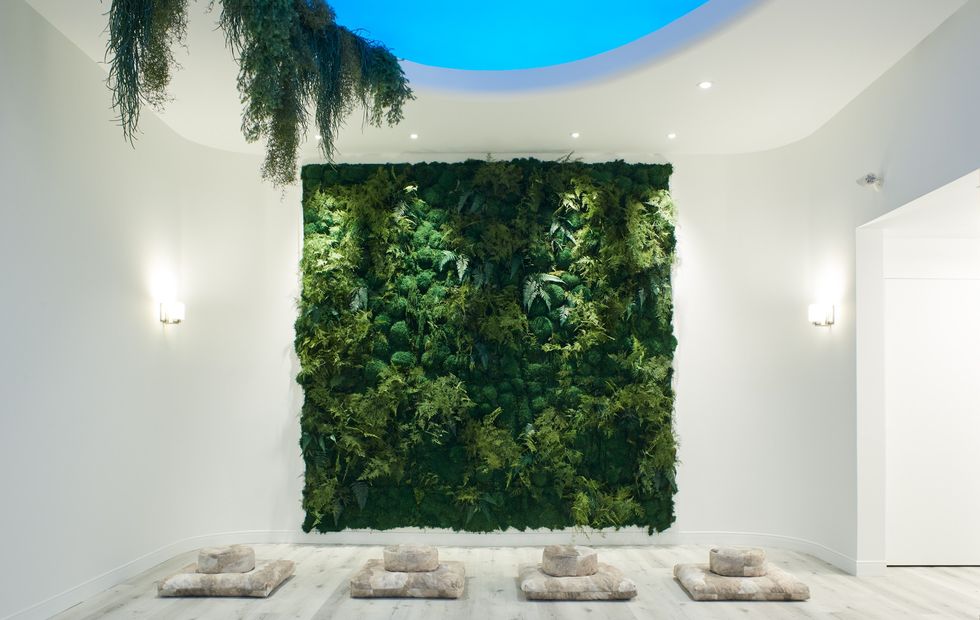It's true that all you need to meditate on is yourself. But, creating a space that enhances your practice can also help you find your om at home.
Meditation has been practiced all over the world for centuries, but it wasn’t until the 70s that the practice really took off in the Western world. These days, it seems meditation is more popular than ever thanks to its many benefits including mindfulness, stress relief and its ability to spark productivity and creativity.
Whether you’re new to meditation or struggling to find time for your practice, creating a small meditation space at home can help remind, inspire and motivate you to practice.
"It definitely helps to have a dedicated space, because it allows you to focus, and it’s a good place to start especially as a beginner," says Julienne Diva, founder of The Presence Of, a company focused on movement, meditation, workshops and wellness.
READ: Anyone Who Wants To Meditate Is Welcome In This Toronto Home
"I would be wary of focusing too much on the perfection of meditating in one dedicated area," Diva warns. "In my own experience, I found there were times where [my space] wasn’t set up exactly how I wanted it to be, and if that was the case I didn’t meditate."
Diva, a creative designer and Usui and Kundalini Reiki Master, explains creating a meditation space doesn’t require an entire room. "I believe as long as you have your breath you can meditate anywhere," Diva adds. Having lived in a 500 sq. ft. condo, she admits she's made use of her existing space by practicing on her bed or couch or near a window.
“When creating a space for meditation in the home I recommend it be in a quiet area, a place dedicated to stillness, clear from clutter or mess,” she says. “You want to create your own sacred space where you can pay attention to your own experience. And, by sacred, I don’t mean religiously but rather a place you can associate with your practice,” she adds.
Diva suggests having a comfortable pillow, blanket or props like yoga blocks to help find comfortable positions, having “plant friends” around to care for and give the space life, candles or a salt lamp for ambience. She also suggests smudging the space with sage or palo santo (sacred wood said to have medicinal and therapeutic healing powers) before starting.
READ: Here’s Why You Should Smudge Your Living And Work Spaces — It May Be Life-Changing
Stephanie Kersta, registered psychotherapist, educator and co-founder of Hoame, a meditation studio in downtown Toronto, explains she and co-founder Carolyn Plater found that in their years of work in mental health and addiction, what they were seeing and treating clinically was a direct result of stressed-out lifestyles. They wanted to create a space that works to prevent mental health issues rather than traditional reactionary methods.
Having used meditation in her clinical practice, training and mental health work, Kersta says science has proven that a deep breath can work faster than anti-depressants. She has seen people who are homeless find their breath through meditation, the same way a CEO finds their breath during a corporate workshop. The same concept of simply separating from everyday stresses and anxieties should be easy and accessible, no matter what your meditation space looks like at home.
“It’s about creating a space that’s easy to get into, so when you see this space or you’re in it, it prompts you to meditation … there is no right or wrong way to meditate as long as you find your breath,” Kersta, says.
The focus, Kersta says is to try and bring in all the senses.
Tips For Meditating At Home
- Have a comfortable place to sit or lay down — Invest in a meditation cushion or sit set, you can even use mats, blankets or pillows to make a comfortable space.
- Use something to evoke the sense of smell — Try using essential oils or a diffuser, Kersta also suggests rubbing essential oils on your wrists and taking sniffs before your meditation. Use one specific scent only for meditation, this can help put you in an energized state.
- Try an eye pillow to help keep your eyes closed or, if you cannot close your eyes, have something aesthetically pleasing to look at.
- Try having something to hold — Depending on your practice, use crystals or mala beads.
- Headphones or a white noise machine can help drown out the sound of your family or roommates when meditating and are also helpful if using a meditation app.
READ: Tech That Will Help You Relax, Sleep And Workout Better At Home
Incorporating these elements in your meditation nook at home offers a ton of options, without taking up a lot of space, time or money. And while there may be a ton of brands and products out there offering tools and accessories for meditation, it’s really about making space that works for you.
“The number one thing for meditation is to just get comfortable,” Kersta says. “When you find what’s comfortable for you that’s what makes the space.”























